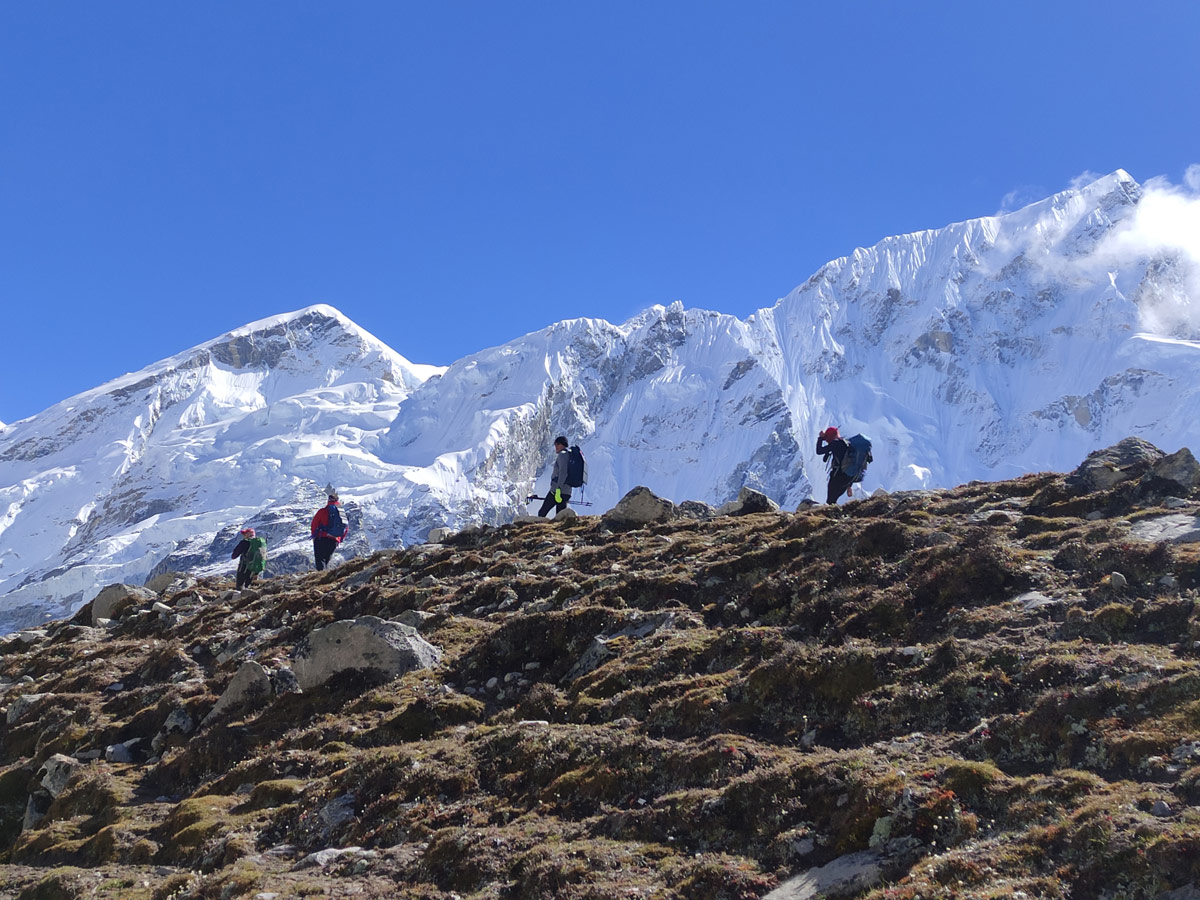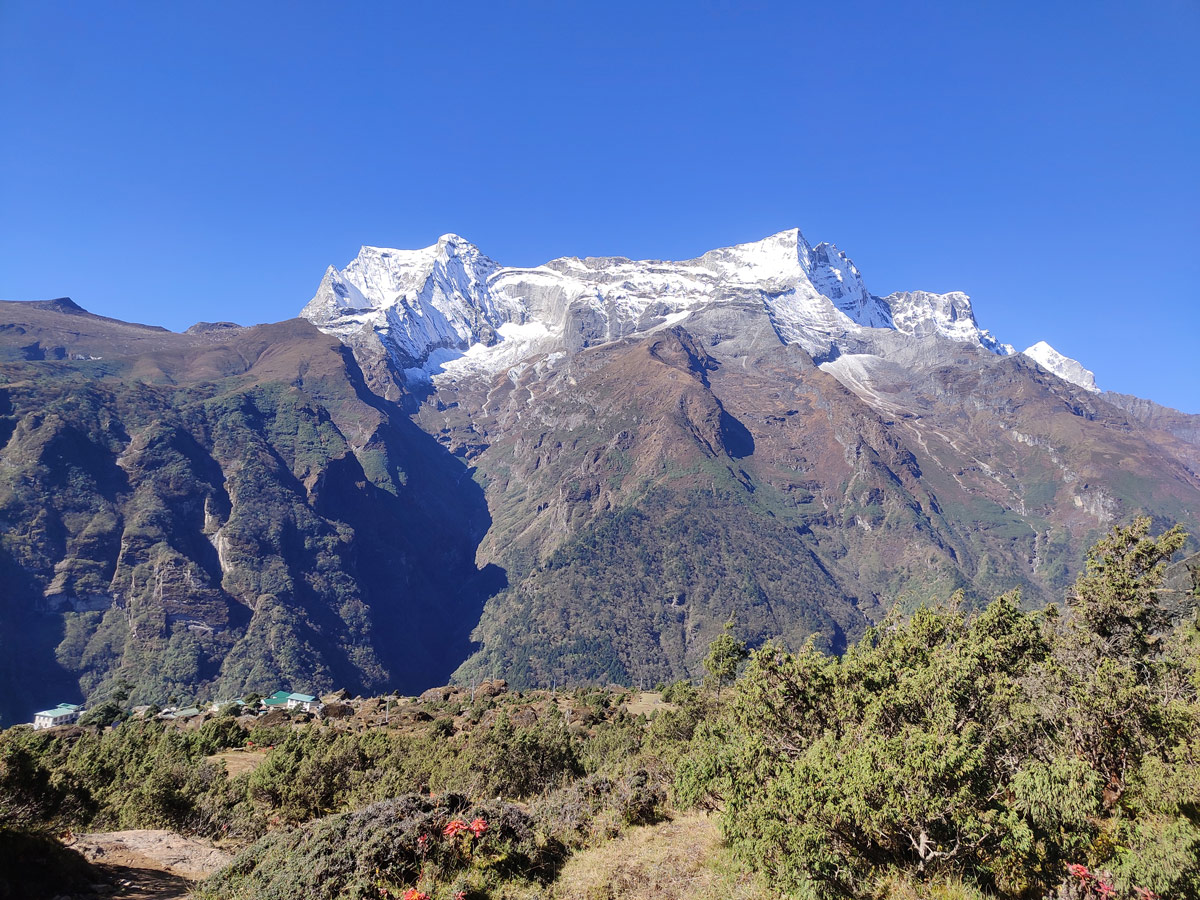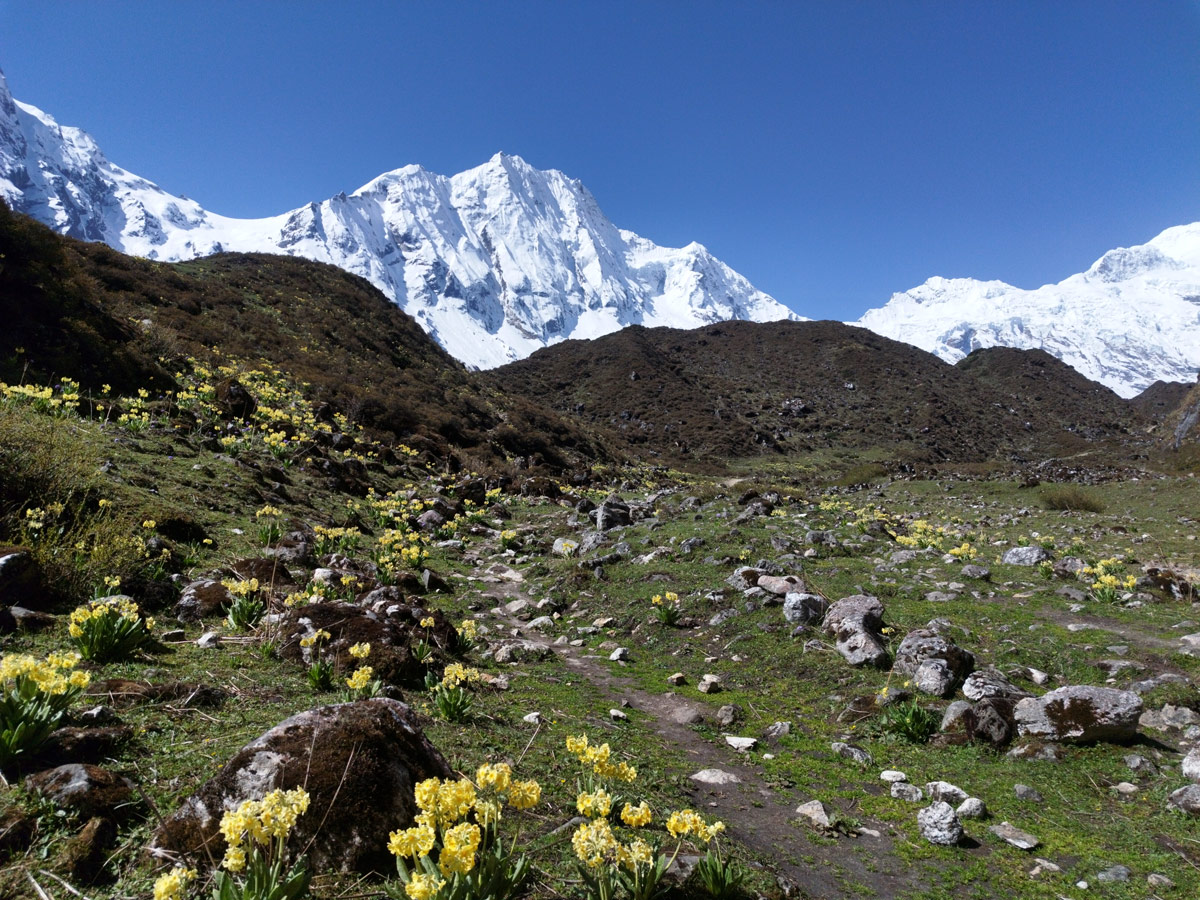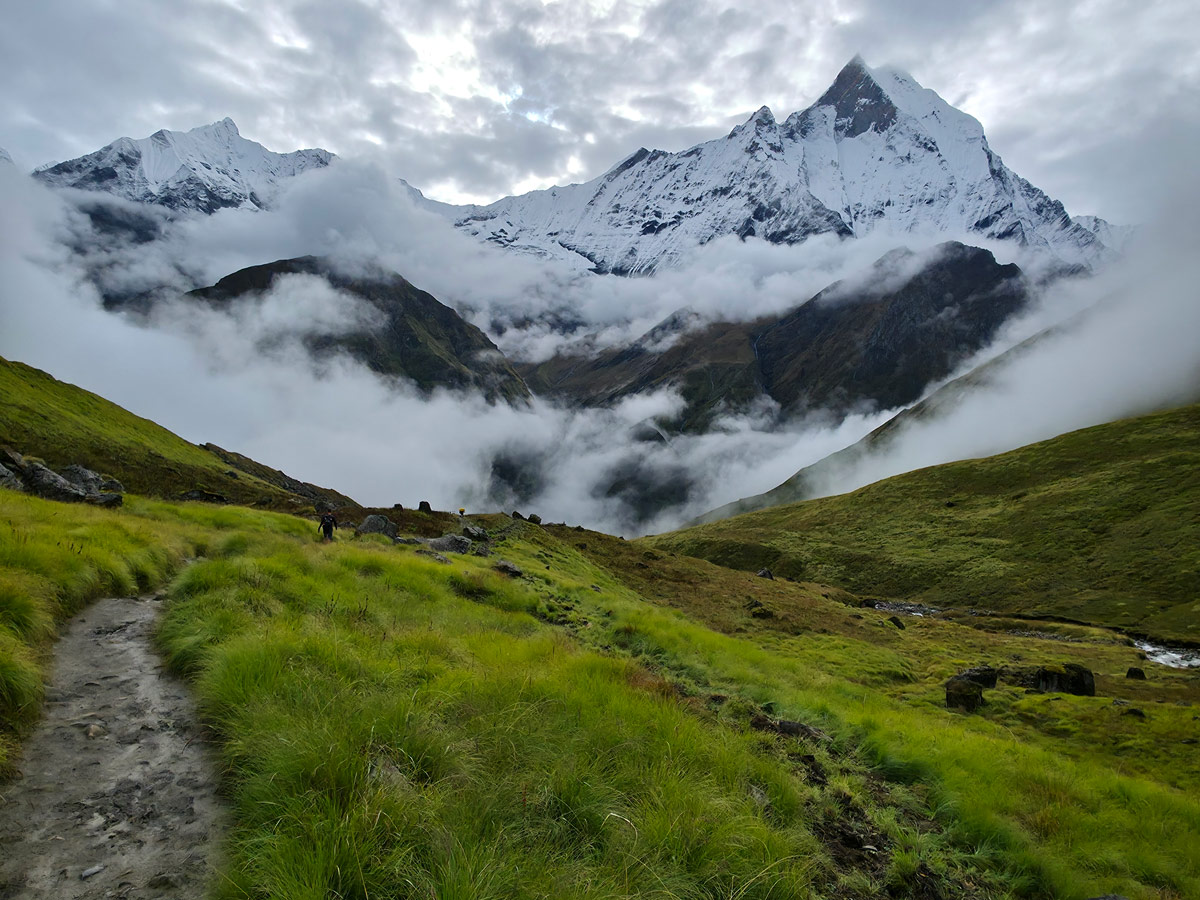Best Time for Trekking in Nepal

Home to eight of the world’s fourteen highest peaks, Nepal has been an unbeatable destination over the years when it comes to trekking as it beckons adventure enthusiasts from all over the world.
Trekking in Nepal is an unforgettable adventure to say the least and it features countless unique and transformative experiences. However, your experience also depends on when you are embarking on your adventure.
While options for trekking in Nepal are available all year round, some seasons truly bring out the best of the trails and offer breathtaking views with much safer trail conditions. So how does one figure out the best time to embark on a trek?
Worry not trekkers. In this blog, we discuss the best time for trekking in Nepal including the seasonal overview throughout the year as well as the factors that you should consider while choosing your ideal season.
Comparing Seasons
The main factors that can affect your overall trekking experience in Nepal are things like the temperature range, climatic conditions, crowd levels, and the activities that you can do during the trek.
Therefore, to help you pick the best time for trekking in Nepal, below is a comparison of the different seasons highlighting the important things that might significantly impact your trekking experience:
Trekking Season in Nepal Comparison Guide
| Season | Temperature Range | Trail Conditions | Crowd Levels | Recommended Gear | Daytime Activities |
| Spring (March to May) | 16°C to 23°C | Blooming, moderate | High | Light layers, rain jacket, comfortable hiking shoes | Hiking, wildlife viewing, photography |
| Summer/Monsoon (June to August) | 20°C to 25°C | Muddy, slippery | Low | Waterproof hiking boots, quick-drying clothing, rain gear | Waterfall chasing, scenic overlooks (beware of lightning) |
| Autumn (September to November) | 10°C to 20°C | Clear, stable | Very High | Mid-weight layers, hiking poles, comfortable hiking shoes | Hiking, scenic photography, historical sites |
| Winter (December to February) | -10°C to 5°C | Snowy, cold | Low | Thermal layers, waterproof snow boots, crampons (depending on terrain) | Snowshoeing, winter camping (experienced trekkers only), ice climbing (with guide) |
Nepal’s Seasons- An Overview
Autumn Season (September to November)
Spanning from September to November, the autumn season is often heralded as the high season to visit Nepal for travelers and trekkers alike as it promises the best conditions for the visitors.
Featuring clear skies, perfect moderate temperature, and minimal rainfall, the season provides unparalleled mountain views and provides the perfect conditions for adventure activities.
As the monsoon rains subside, the landscapes seem vibrant and rejuvenated with the stark valleys painted in hues of orange and yellow providing the perfect contrast to the snowcapped mountains.
Especially for trekkers, autumn is the peak season as the trails along the Everest region, Annapurna region, Manaslu region, or any other trekking area are enhanced with the diverse and blooming landscapes combined with the crisp air.

The flora and fauna in the region are highly active and ever changing, giving you the chance to view the natural beauty of the country in all its might. The weather conditions at challenging altitudes also become comparatively bearable.
Coinciding with the major festivals of Nepal like Dashain and Tihar, there cannot be a better time for cultural exploration in the country than the autumn season as you get to be part of the unique celebrations and rituals.
Being the pinnacle time for traveling, autumn in Nepal often features high costs as the country is overflowing with tourists. So, if you want a quieter and personal experience, autumn might not be the best pick for you.
Spring Season (March to May)
Often referred as the shoulder season for trekking in Nepal, the spring season spans from March to May and can be considered the best season for visiting Nepal as the dry months of winter transforms into vibrant natural beauty.
The weather during the spring season is quite pleasant with warm temperatures and long days allowing the visitors to make the most out of their visit.
For trekkers, spring is preferably the best option as the trekking conditions at the high altitude become bearable with the clear skies offering unrestricted views of the Himalayan giants.

The trails burst into life with the beautiful hues of blooming rhododendrons and other wildflowers along with the increased activity of the wildlife giving a better glimpse into the rich biodiversity of the country.
Although the season also features a decent traffic of tourists, it is comparatively less than the autumn season, making it the perfect pick for people wanting to visit the country in neither congested nor isolated conditions.
The season also features some of the festivals like Holi, Buddha Jayanti, allowing the trekkers to delve into the cultural richness of the country. Therefore, spring is the perfect tandem of nature, culture, and suitable weather for visitors.
Winter (December to February)
The winter season spanning from December to February presents Nepal in a completely different light with the high-altitude areas transforming into a snowy wonderland.
The weather can be a challenge with temperatures ranging from –5 degrees to 10 degrees at the lower region which dips even more at the higher altitudes making it difficult for the trekkers.
The mountains are blanketed in snow and the clear skies provide a breathtaking and unobstructed view of these peaks. For trekking enthusiasts, the winter can be a challenging but highly rewarding season.
Even the lower altitude treks like the Poonhill trek turn into winter wonderland providing unparalleled panoramas of the Himalayas. However, the chances of heavy snowfall also exist at high altitude trekking routes.
But there are some winter treks in Nepal which truly come to life during winter as their main highlight becomes the icy trails and the snowcapped peaks shining from a distance.
For those seeking a quieter experience in the landscapes of Nepal, this is the best season for you as this is the off season and features limited travelers.
As unique as the experience of trekking in Nepal during winters is, it is important that the visitors are equipped with proper clothing and gear depending on their nature of visit.
Monsoon (June to August)
Traveling to Nepal for trekking in monsoon can often be considered as a double-edged sword as although the season spanning from June to August transforms the country into a lush emerald paradise, it becomes equally risky for travelers.
The unpredictable and heavy rainfall can make many regions of the mountainous country prone to landslides. Therefore, visitors might experience lots of blockage acting as a hurdle to their visit.
Especially for trekkers, monsoon is not a preferable season as the trails become extremely slippery and filled with leeches. Trekking at higher altitudes during monsoon becomes treacherous and can cause several accidents.

You might also have to stop your trek midway due to potential challenges related to weather. Given the risks associated with monsoon, even the teahouses at some treks like the Manaslu Circuit trek might be closed during the season.
For all these reasons and challenges like heavy rain, landslides, and treacherous trails, trekkers are advised against trekking in the monsoon season (June to August).
However, for those wanting a quieter yet unique visit to Nepal, places like Upper Mustang and Dolpo can be your go to destination during monsoon as they remain rather dry as they are situated in the rain shadow of the Himalayas.
Here, you’ll encounter lush green landscapes, a unique experience compared to other seasons, and significantly fewer crowds.
The downpours also wash the dust away and make the natural atmosphere even more enjoyable in the lower regions of the country featuring lush valleys and cascading waterfalls in all its might.
But remember that this is an option only for experienced trekkers with proper gear and a flexible itinerary who can adapt to the changing weather conditions.
For those wanting to travel in solitude, although challenging, monsoon might also be a good pick except for trekkers. Explore some of the monsoon trekking routes in Nepal to make your best pick.
Factors to Consider When Choosing the Best Time for Trekking
While the season and climatic conditions is one of the main factor to consider, other things like your personal preferences and expectations from trek also play an important role while selecting the best time for trekking in Nepal.
Scenery
The scenic views in the Himalayas of Nepal are often one of the best things to look forward to while trekking. However, there is a wide range of panoramas that might be pleasing for you.
If you are someone who enjoys the colorful blast of wildflowers along the trail, spring is the ideal season for you. However, if you want a combination of flora and fauna with unobstructed mountain views, go for autumn.
Even the off seasons have their own scenic beauty. Winters can give you a glimpse of the snowcapped peaks in all their glory and in monsoon you will see the water bodies like waterfalls and rivers in all their might.
Crowd
Another factor which heavily influences your choice for the best trekking season is to analyze whether you are a social butterfly or someone who seeks solitude during the treks.
If you are someone who enjoys the company of fellow trekkers and look forward to establishing a lasting camaraderie, peak seasons like autumn and spring are best for you as the trails are packed with trekkers.
However, if you are trekking to find some tranquility and would like to experience intimate connection with nature, it is best that you opt for off seasons including winter and monsoon as not many people trek during these seasons.
Fitness Level and Prior Experience
The best season for you can also vary depending on your fitness level and prior experience. If you are a beginner, it is best to stick to spring and autumn as they have more bearable climatic conditions.
During these seasons, the trails are also not as difficult so you can tackle the beginner-friendly trekking routes with much more ease as opposed to winter and monsoon.
While trekking in winter and monsoon, the trail will throw many challenges at you which will require a high level of physical fitness to tackle. Also, these out of the box options are best suited for experienced trekkers rather than for novices.
Essential Tips for a Safe and Enjoyable Trek in Nepal
Irrespective of the time that you pick for your trekking adventure, some tips can really come in handy and make your trek even more convenient, safe, and enjoyable. So we have few insider tips for you:
- When trekking in peak seasons like autumn and spring, it is best to make pre bookings so that you don’t have to face issues related to overbooking and lack of availability.
- If you are a budget conscious traveler, booking early is the best way to avoid last minute price hikes, especially during peak trekking season.
- While trekking during the peak seasons, start your trek early in the morning. That way you might be able to avoid some of that massive trekker’s traffic.
- Make your packing list elaborate according to the season that you have chosen. However, always make sure that you carry lightweight clothing, warmer layers, as well as jackets as the climate can change at any time during these high-altitude treks.
- If you are trekking during monsoon, make sure to have some precautionary measures in place. Carry anti leech socks, insect repellants, waterproof clothing, and rain covers for your backpack.
- While trekking during winters, it is best to carry micro spikes, ice cleats, and even crampons to help you make your way through the icy trail.
- Carry heavy duty clothing and insulated sleeping bags for maximum comfort and warmth during winters.
- Trek with experienced guides and partner with reliable local tour operators as they can help you navigate any emergency situation on the trail, especially during the off season.
- Be prepared for sudden changes in the weather and keep a day or two extra in your itinerary just in case.
- Make sure you acclimatize well irrespective of the time when you are going trekking. This is important to prevent altitude sickness as it is a common hazard in high altitude treks during any time of the year.
